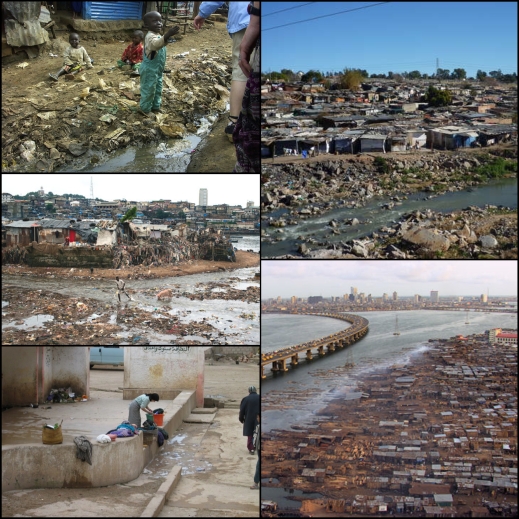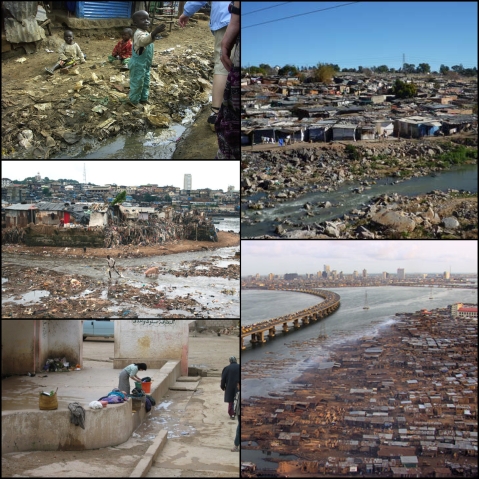Blog Exercise Four

The pictures provided for this blog are of typical Shanty towns in Africa. These are the slums of African cities which are filled with unregulated settlements constructed and inhabited by squatters who cannot afford to own their own land or pay rent. They exist because of a slow economic development that cannot keep up the pace with the unprecedented growth of the population due to high birth rates. The government does not provide these communities with sanctioned services such as water, police, electricity, roads, and schools. These communities are also not taxed by the government. Because there are no government services, there are no governmental regulations or standards placed on the way these people live. The sites of slums are filthy and dangerous. These communities do not have access to clean water or a sewer system. In overcrowded conditions with stand pipe water, these people are often greatly impacted by disease, such as cholera, because of this the unhealthy environment that they live in. Most shanty towns are located on the edges of cities of developing nations on sites that are unwanted by developers because of health and safety hazards or other reasons that make the land have no value or make it unable to be developed. Many of sites of slums are located on swamps, steep hills, industrial areas, trash landfills, river valleys, steep slopes, under highways and other kinds of “uninhabitable” areas. Much of what is considered trash by people, who make money through a formal economy, is scavenged for and used by people in shanty towns as a commodity for trade and source of income. All services for the community are provided by the shanty town’s residents and are under the counter, that is, nontaxed because there is no big market for commercial goods and services. Goods such as thrown out clothing are cleaned off and resold at tables on unpaved paths throughout the slum along with services that make up their informal and unreliable economy. The children of these impoverished families living in slums are put to work with activities such as gathering tradable items from trash piles, instead of receiving a formal education. The housing of slums are make-shift small simple single spaces constructed of various available materials, commonly including corrugated tin, sheets of plastic, plywood, and cardboard boxes. The houses are often settled densely together and would often be considered a fire hazard. Outside of Africa there are many other countries that have slums including India, China, and countries of Latin America such as Brazil. Cities such as San Paulo have slums that have been so oppressed by the government by militarization that the slum communities have transferred their leadership over to drug lords who protect the slum population from the government and provide services to the community. The drug lords use slum communities to hide drug trafficking. Overcrowding in cities, such as Hong Kong, have what might be considered one step above shanty towns because their growth is regulated, these people actually do have access to jobs and health care. Many people are living in mass produced houses, some even in cages that are as big as 6 feet by 2 feet by 3 feet. In some areas shipping containers are piled on top of each and are paid for as rental homes for families. These shipping containers have electricity which is a hazard because the containers are made of metal. The problem in China is not a lacking economic growth or a lacking of industrial development, rather there is no housing/land to accommodate the rampant industrial growth.

Recent Comments